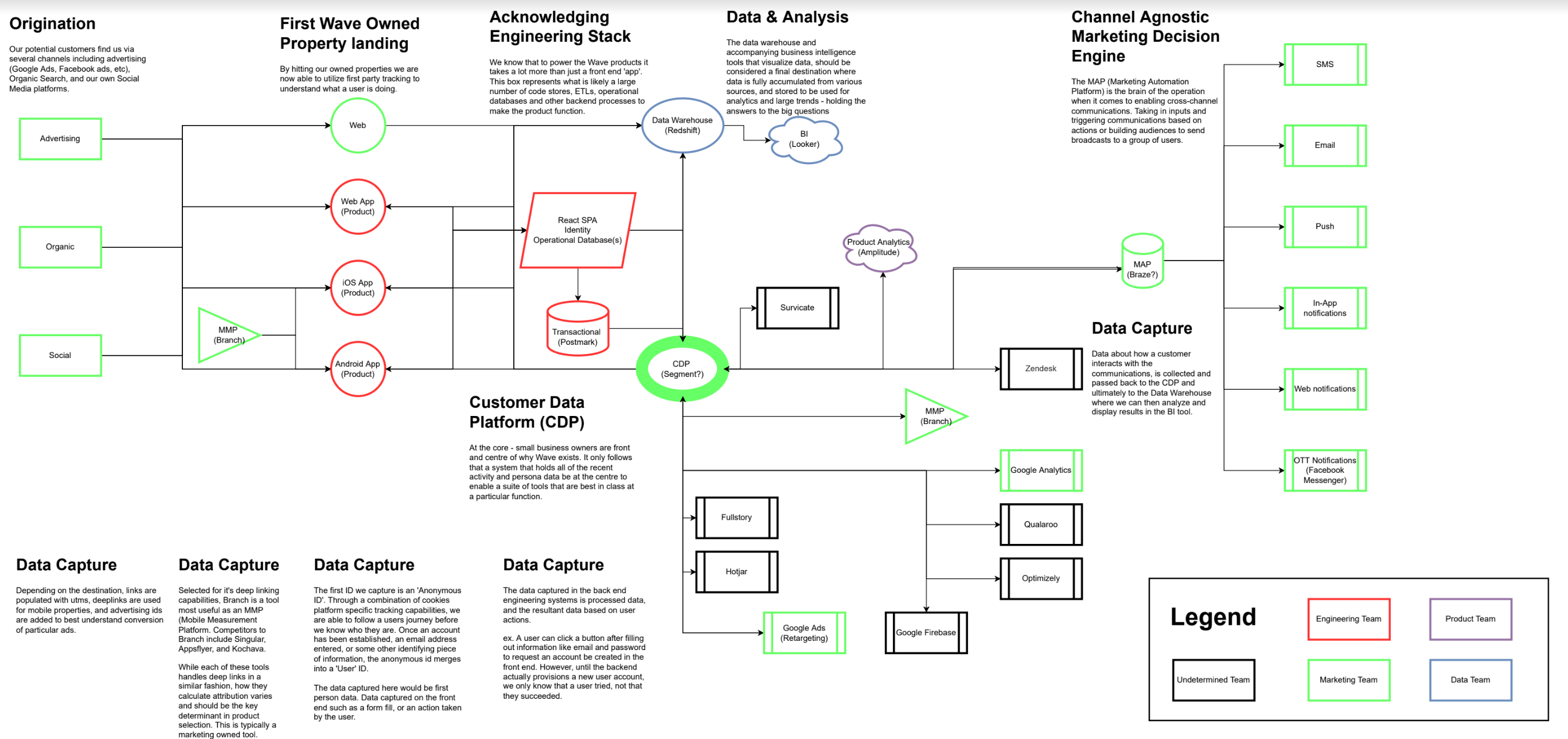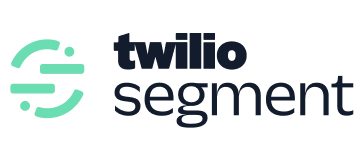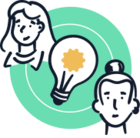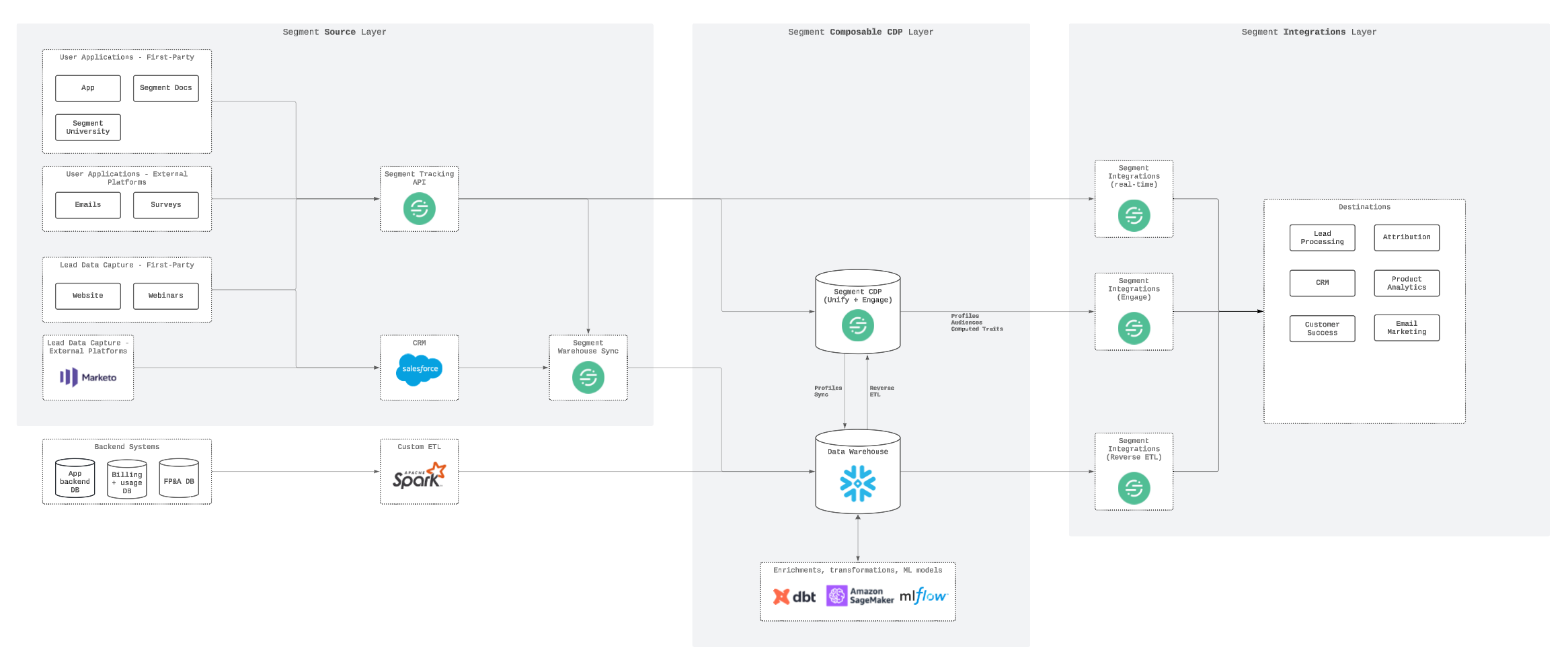
It’s not perfectly up-to-date, as I made this almost 2 years ago now, but this is how we are putting Segment at the center of our world.
Sources
We currently have 16 sources, mostly various front and back end engineering systems, python, ruby, js as well as our ios and android apps. In our typical setup, we have both a staging and prod system connected for testing, but do not connect our staging into the Engage portion to keep data clean.
Warehouse & BI
All of our data flows into Redshift and we visualize in Looker. This is a work in progress for sure, but every day we add new reports to get ourselves more campaign performance data.
Destinations
This is where it gets fun in my opinion. We have everything from FullStory to Braze, Branch to Hubspot, Zendesk to Survicate, Google Ads to Optimizely. Needless to say, its a handful. In total, our roadmap is to get to 20 tools.
SOOOO….What’s in your stack?




